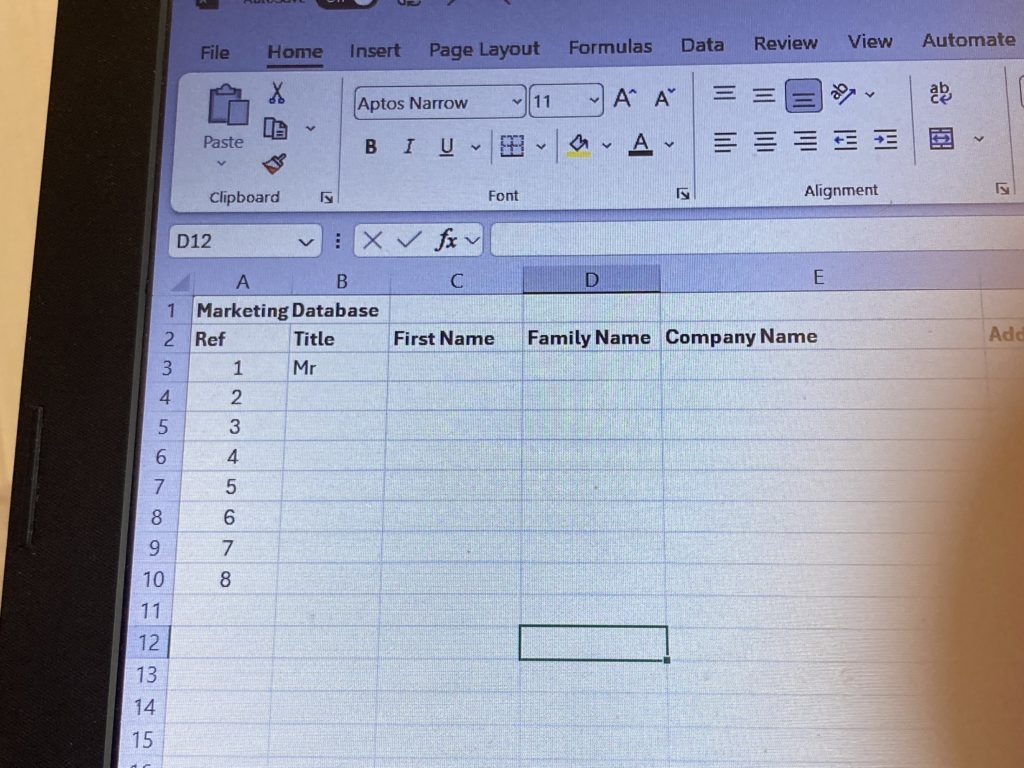When we started the company thirty years ago, Clive and I were working in a college. We were training people how to use technology, whether it was computers or cameras. That itch to pass on our knowledge has never really left us, and we have continued to offer training to this day.
The blog below, which I originally wrote in 2016 and have edited, is as relevant today as it ever was. It shows that even big software companies winning major public sector contracts can make elementary mistakes that cause big problems!
“Database 101
Posted on April 5, 2016
With apologies to all those who know exactly how a database works, I thought it would be a good idea to just go over the absolute basics today. This is because I so often come across examples of databases which do not work at all. They may as well be scribbled notes on a piece of paper as they can only be analysed by the human eye.
This time last year (April 2015) I was working on a huge mess-up. It was caused by a fundamental error in the setting up of a database covering thousands of employees. An upgrade to the system had exposed the problem. Staff records were being duplicated, or people with the same names were being given each other’s data. It didn’t even matter if employees had left, the system was resurrecting them. Can you guess what the fundamental error was?
What the Software Developers did Wrong
Yes, all those who have worked with these things before, I am sure you know. The most basic thing about a database is that each record has to be unique and only refer to one person or thing. That database was working on the employee name, which in a large company is unlikely to be unique.
What the software developers should have done was to use something unique, like the national insurance number or the employee number. I spent some time sorting out the mess and changing the system so that each record used the employee number. As far as I know there have been no problems since!
Another Messed up Database
Today (April 2016) I was working on another messed up database. This one was very much smaller, and was just one spreadsheet with about one hundred records. The user wanted to print a set of labels using the data.
Well, I suppose I could have opened up a Word document with a labels template and copied the required information label by label from the spreadsheet. There was no alternative until the information had been ordered correctly on the spreadsheet so that the word processing software could reference the correct pieces of data to complete the label.
The user had shown each record on its own line, but the information was entered in a fairly haphazard way across each line. Many of the address details, for example, were entered in one cell only, with a comma separating each part of the address. In other examples, the email addresses were shown in a scattergun way. As I said above, the only way to use the data without re-organising it was to just pick out the information needed piece by piece.
What if there had been thousands of names and addresses to be put onto labels? The task would have been almost impossible!
How to Prepare a Database
So, this is how to prepare a database. We shall use the names and address details as an example. Each name and address has to be unique and it is called a record. If you think about the format of a spreadsheet, it has rows going across, and columns coming down from the top.
Step across several columns going towards the right. At the top of each column you will write the name of a piece of information you want for your label, such as postcode. Start with your unique piece of information, which could be just a sequential number as you type in the records, and that will go in column A.
Move down one row. This will be your first record.

Afterwards you can do many more things with your database than create labels. If you wanted to, you could find everybody who lived in a certain road. If you add more columns, such as occupation, you can find out more about the types of people who live in certain areas by sorting the data to answer different questions. A spreadsheet program has easy ways to do this if the records are all entered correctly.
Databases are at the core of the information revolution. Understanding how they work and being able to create your own simple spreadsheet-type database can make you understand the information in your business so much better.”
Training
I could give you other examples of messed-up databases I have had to sort out, but you get the idea. Much as I like to earn my keep by doing that kind of work, I also love to train users. So if you or your team need some training on spreadsheets or any of the other basic administrative fundamentals involved in running a business, just give us a call or fill in our contact form and we can make a date!
Diana Catton – by-line and other articles
Further Reading
Our training – risk analysis, cyber security, incident response, disaster recovery…


